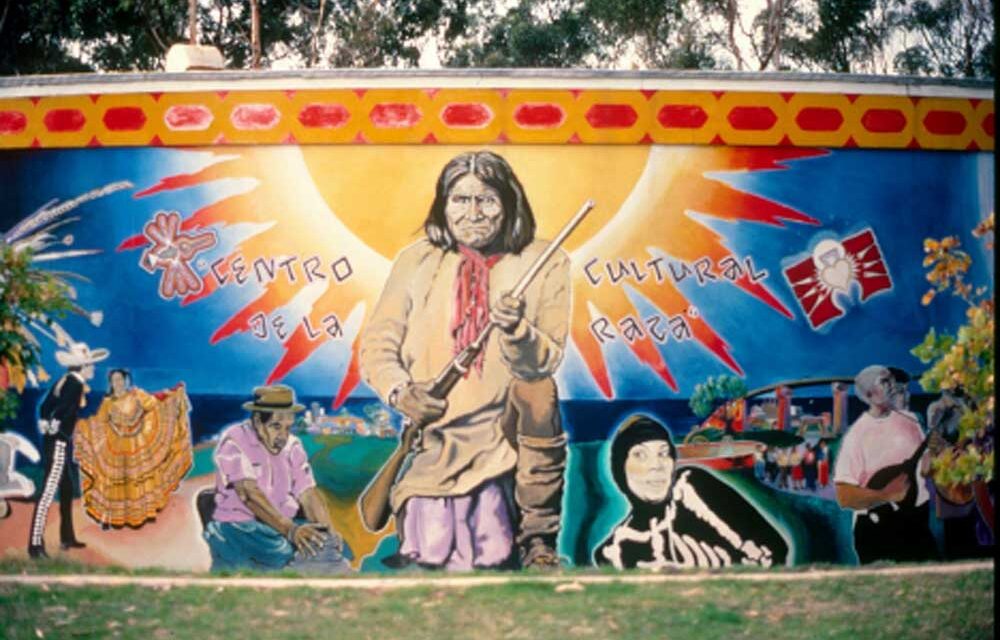Chicano Art is coming of age. The Smithsonian American Art Museum “Printing the Revolution!” exhibit is coming to the Amon Carter Museum in Fort Worth, Texas
in March 2022. Later in the Spring, the Romo collection “Estampas de La Raza” will open in Sacramento, California. The opening of the new Cheech Marin Center for Chicano Art & Culture in Riverside, California is anticipated in the fall of 2022. Additionally, several museums in the United States and Mexico are planning similar openings of Chicano art.
I am often asked about my interest in Chicano art, and usually, the questions revolve around the why, when, and how. The why is a more complicated question than the when and how. Since my wife Harriett and I both became interested in art at the same time, I will add that neither of us grew up with art in our homes. I don’t recall seeing any art in my Mexican barrio in the Westside of San Antonio. Like most of my school friends, I never visited a museum before attending college, and I read little about artists and their lives.
Art has universal appeal, and one does not have to be educated on the topic to enjoy art or to engage in it. My artist friend Jesse Trevino grew up near my home in the Westside, and we both went to the same high school. He developed an early love for drawing and painting. By the time he had finished high school, he had won enough regional art competitions to earn a scholarship to the prestigious Art Student League in New York. His art is now in the Smithsonian and other major museums. Trevino was one of many Latino artists in Texas and beyond who took art seriously enough to build a successful art career.
Collecting art and appreciating art is different from making art. My first interest in art emerged as a result of my graduate classes in Mexican history in the late 1960s. However, I credit the decision to buy our first pieces of Mexican art to my wife Harriett who, during that same period, fell in love with the drawings of Mexican artist and sculpturer Francisco Zuniga. She had seen Zuniga’s drawings in the home of a friend who taught at the same Los Angeles elementary school. When we decided to add Mexican art to our home, we had a modest income. As teachers, we each earned $180.00 per week or $45 per day. We literally had no savings when we decided to buy a Zuniga lithograph.
The art gallery our friend recommended no longer carried Zuniga’s prints. Nonetheless, we patiently returned to the gallery regularly in hopes of locating Zuniga’s work. After a half dozen unsuccessful visits, the gallery owner, Bernard Lewin, convinced us to consider other Mexican artists, including David A. Siqueiros and Rufino Tamayo. At the time, the Lewin Gallery had several original works by Siqueiros and limited print editions by Tamayo. Lewin’s Gallery was located in the middle of Beverly Hills on Rodeo Drive. Lewin liked us and allowed us to buy a Tamayo print on what I described as a “lay-a-away plan” at $25 per month. The purchase price of $300 was three times our monthly rent. We had become art collectors!
My interest in Chicano art coincided with an academic position I took in 1970 as an assistant professor in the newly created Chicano Studies Department at San Fernando Valley State College [ SFVSC] in Los Angeles. In the years after numerous student strikes protesting the Vietnam War occurred at several California universities, students of color began asking for classes that explored their experiences, told their history, and explored their literature and culture. These students wrote poetry and literature and performed their own plays dealing with Chicano themes. They also began to create their own art.
I started doctoral studies at UCLA in American History that same fall of 1970. I had taught Mexican American history and American history at a Los Angeles high school, and my introduction to college teaching at SFVSC was a baptism of fire. While teaching at Franklin High School in East Los Angeles I met Ruben Salazar, a journalist with The Los Angeles Times. Salazar wrote one of the best definitions of what it means to be a Chicano: “A Chicano is a Mexican American with a non-Anglo image of himself…What then, is a Chicano? Chicanos say that if you have to ask, you’ll never understand, much less become a Chicano.”
Dr. Rodolfo Acuna started the SFVSC Chicano Studies Department in 1969, and the Chicano history classes were among the most popular in the program. At SFVSC I met several emerging Chicano artists and photographers. Oscar Castillo, whose photography has since been collected by the Smithsonian, was instrumental in introducing me to other Latino artists, including Sergio Hernandez and William Bejerano.
I recently spoke to Oscar Casillo about those early days. He reminded me that Sergio Hernandez had helped paint the well-known Chicano mural at UCLA in 1970. The mural was commissioned by the Chicano Studies program at UCLA and was one of the first murals by Chicano artists in any major
university.
My Chicano art journey received a major boost in 1975 when I accepted the Board Chairmanship of the Centro Cultural de La Raza in San Diego. We had moved to San Diego in 1974 when I took a position in the history department of UC San Diego. During the five years I served as Chair of the Centro Cultural Board, I met and interacted with dozens of Chicano artists and hundreds of community activists. I had the good fortune of meeting the Chicano artists and activists who secured Chicano Park for the Logan community in San Diego. My Chicano art education evolved daily, and I enjoyed the learning process as I interacted with the many talented Chicano and Chicana artists in Southern California who were documenting the Chicano experience through their creative works.






